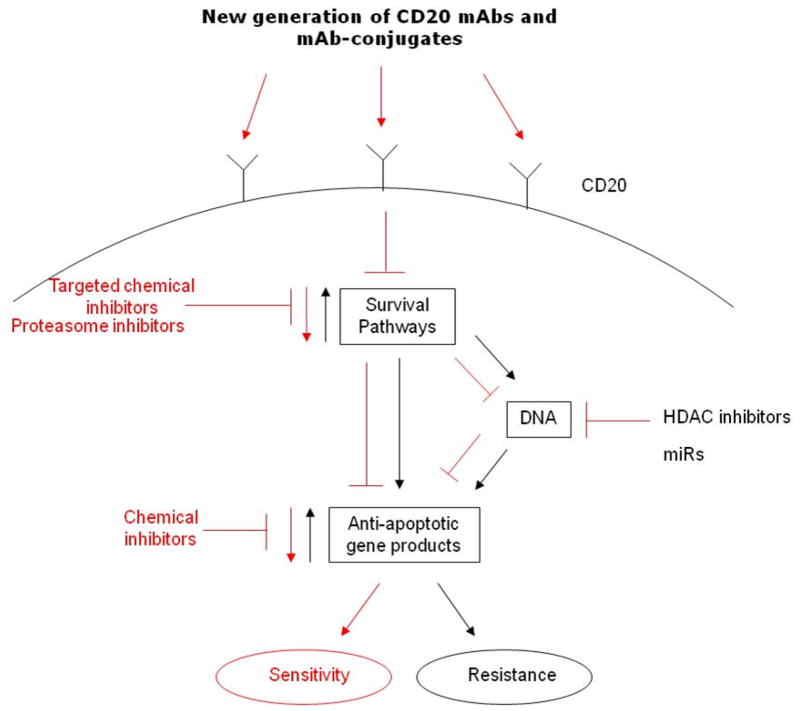Figure 1.
Schematic diagram of the molecular mechanisms that regulate resistance to rituximab and approaches to overcome resistance. Briefly, the unresponsive B-NHL cells exhibit hyperactivated survival/anti-apoptotic pathways which regulate downstream anti-apoptotic gene products that result in the development of resistance to both rituximab, chemotherapy and combination. The intervention to inhibit the survival pathways may be achieved by targeted chemical inhibitors, proteasome inhibitors, selective chemical inhibitors for the anti-apoptotic gene products, as well as HDAC inhibitors and microRNAs. In addition, the potential application for the development of a new generation of CD20 mABs, alone or conjugated with various agents to enhance their activities.

